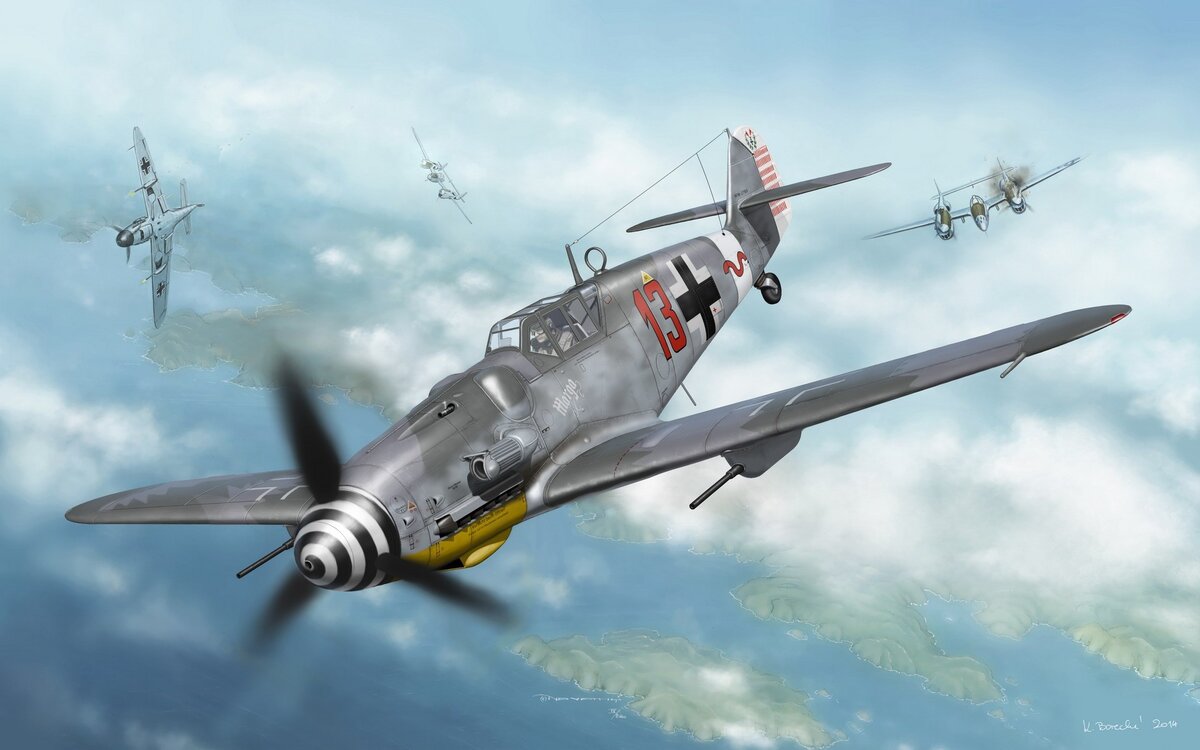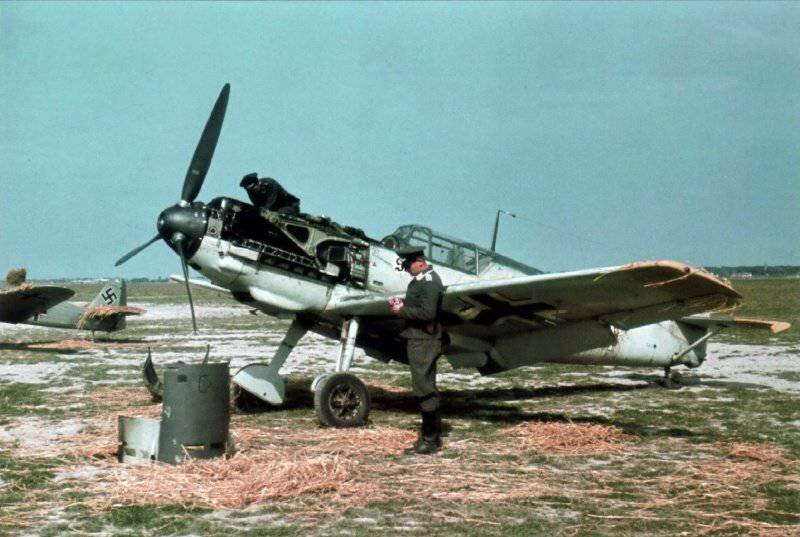At the beginning of 1934, the Technical Directorate (T-Amt) of the Reich Air Ministry developed technical specifications for a modern single-seat monoplane fighter to replace the Henkel He-51 and Arado Ar 68 biplanes. These specifications, together with an order for prototype machines, were sent to the leading aircraft design firms - Heinkel, Focke-Wulf and Arado Flugzeugwerke.
Willi Messerschmitt was refused a development contract on the grounds that his firm (Bayerische Flugzeugwerke, (Bf.)) had no experience in building high-speed combat aircraft. The technical department was of the opinion that if Messerschmitt could create a fighter aircraft, the latter would not compete with the aircraft of more experienced designers Walter Retel and Ernst Heinkel. Head of the Secretariat for Aviation Erhard Milch fully shared this view. He even believed that in the event of Messerschmitt's success, he would still refuse to place a production order with Bayerische Flugzeugwerke (Bf.).

The animosity between Willy Messerschmitt and Erhard Milch had been brewing since 1929 and was further exacerbated when Lufthansa cancelled the contract for ten transport aircraft already being assembled in Augsburg. Messerschmitt considered the cancellation of the contract illegal, and BFV, due to the inability to return the advance payment to Lufthansa, was forced to declare bankruptcy. The war between Messerschmitt and Milch escalated. By the time the Bayerische Flugzeugwerke was resurrected, Milch, to whom Hitler himself was indebted, had been appointed chief of the Aircraft Secretariat. As Milch now often replaced Goering, the head of the secretariat quickly gained enormous power, allowing him to limit Messerschmitt's work and his company's orders to licence production only.Receiving no orders from the German Air Ministry, Messerschmitt was forced to seek permission to develop aircraft for foreign interests. His co-manager R. Kokotaki managed to conclude a contract with the Hungarian firm ‘ICAR’ from Budapest on the development and sale of licenses for the production of several models of light aircraft. This gave reason for detractors to accuse Bayerische Flugzeugwerke of neglecting national interests. As a result of the high-profile scandal, proceedings with the Gestapo and the intervention of Rudolf Hess, the Technical Department involved Bavarian aircraft manufacturers in the development of a new fighter aircraft.
The Messerschmitt Bf.109 fighter (German Messerschmitt Bf.109, in the USSR the traditional designation was Me-109) is a single-engine piston-engine low-wing fighter, which was in service with the Luftwaffe and the air forces of several other countries for almost 30 years. Depending on the modification, it could be used as a fighter, high-altitude fighter, fighter-interceptor, fighter-bomber or reconnaissance aircraft. Throughout World War II it was the main aircraft of the Luftwaffe. By the end of the war in April 1945, 33,984 Bf.109 fighters of all modifications had been produced. The Messerschmitt Bf.109 became the most mass-produced fighter in history, and in terms of the number of copies produced it was second only to the Soviet Il-2 attack aircraft.

The Bf.109 is considered to have set new standards for fighter design around the world. In many ways, it became an example and model for many high-speed all-metal single-seat monoplane fighters of the time. Of course, there is some exaggeration here, but there is also some truth to it. Designed by Willi Messerschmitt and his chief designer Walter Retschel, the fighter was in fact the most advanced in its class at the time of its introduction. Moreover, this fighter managed to maintain the success of its debut and in the future, constantly improving, acquiring new weapons and engines, it did not give up its position for 7-8 years, which for that time, when the world aviation was developing at an unprecedented pace, was an unquestionable achievement.
The Bf.109 fighter can be called a design masterpiece. This machine was unlike anything created before it. In its creation, the designers did not pay tribute to the traditional views of the fighter aircraft, in its design only the most advanced developments in the field of design and aerodynamics were used, thanks to which the aircraft was able to demonstrate outstanding for those flight characteristics.
The Messerschmitt Bf.109 was a combination of the smallest possible airframe with one of the most powerful engines, with the most advanced all-metal construction for those years, which had a working skin, automatic pre-wings and slotted flaps, retractable in-flight landing gear struts and a closed cockpit lantern.
The design of the fighter was a low-wing aircraft with a water-cooled engine. During the whole period of serial production the engine of the aircraft changed from Jumo-210, then DV-600, and on the machines of the last modifications - DB-601 or DB-605. At the same time the engine power grew from the initial 700 hp to 1475 hp, and when using the MW-50 or GM-1 engine boosting systems, its maximum power grew to 1800-2000 hp. The cockpit was located in the middle part of the fuselage and was completely closed by a lantern, which was tilted to the right side of the machine. The glazing of the cockpit lantern was made of high quality transparent plastic, which provided the fighter pilot with excellent visibility.
Usually the aircraft was equipped with an oxygen device, and in the tail part of the fuselage there was a radio station. The latest fighter models also used the FuG-25A aircraft identification radio, which was a transceiver that received signals from a ground-based VHF radio station and automatically transmitted a conventional signal in response. Directly under the pilot's seat and behind the cockpit were 2 metal fuel tanks with a total capacity of 400 liters. Some modifications of the fighter had the option of installing an additional fuel tank under the fuselage.
After the war, one of the most famous German aces, Erich Hartmann, said that the Messerschmitt's only problem was takeoff. The fighter had a very powerful engine and a fairly narrow undercarriage track. In the event that it was too early off the ground, the machine could simply turn 90 degrees, as a result of such accidents, the Germans lost many good pilots.


















